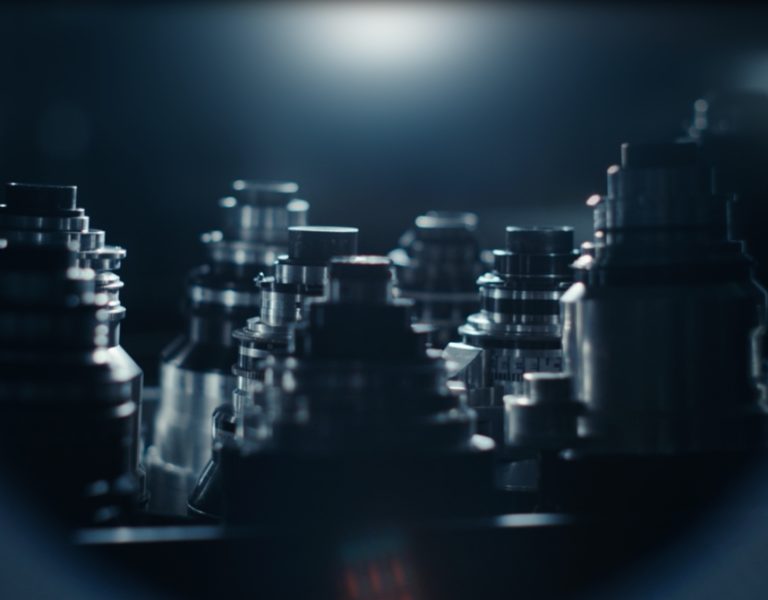Passion & Murder
Noah Greenberg / Lizzie

Passion & Murder
Noah Greenberg / Lizzie
BY: Trevor Hogg
Becoming a cinematographer was accidental for Noah Greenberg (Most Beautiful Island) who was originally a portrait photographer. “Craig William Macneill, the director of Lizzie, is very much to blame for this! We had become friends through work, and one day over drinks he asked me to shoot his new short film. I politely reminded him that I had never touched a motion picture camera, but Craig assured me that I could figure it out. The next day I phoned him to say that I was in. The project was in Spain, in Spanish, and shot on Super 16mm film. It was a blast! And, I knew then that I wanted to transition to motion.”
The latest effort from the frequent collaborators is a psychological thriller that recounts the infamous murder of the Borden family in 1892 with a cast that includes Chloë Sevigny, Kristen Stewart, Dennis O’Hare, James Huguley, Fiona Shaw, Jamey Sheridan and Kim Dickens. “Lizzie is the first period piece I’ve shot,” states Greenberg. “Outside of those considerations, in particular balancing the lighting to candles and oil lamps, it was familiar territory.” Macneill assembled a small look book of film and photography references showcasing the tone that he had in mind for the project. “We discussed, watched, and traded other references leading up to the shoot, honing in on shared ideas for particular scenes or lighting situations.”
“Craig and I have been working together for years and can frequently finish each other’s sentences,” notes Greenberg. “We relied less on research and more on a shared aesthetic and idea about how the characters and space would be represented. We had very little prep time for experimentation or camera tests, so most of the ideas were refined on the fly in collaboration with our gaffer [Peter Walts] and production designer [Elizabeth Jones]. However, we did visit the real Borden home in Fall River, Massachusetts, and spent a morning with Michael Winters at the Fall River Historical Society just ahead of prep to get a crash course in the architecture, and historical context of Fall River circa 1890.” Preproduction lasted four and a half weeks with 23 days of principal photography taking place in Savannah, Georgia.
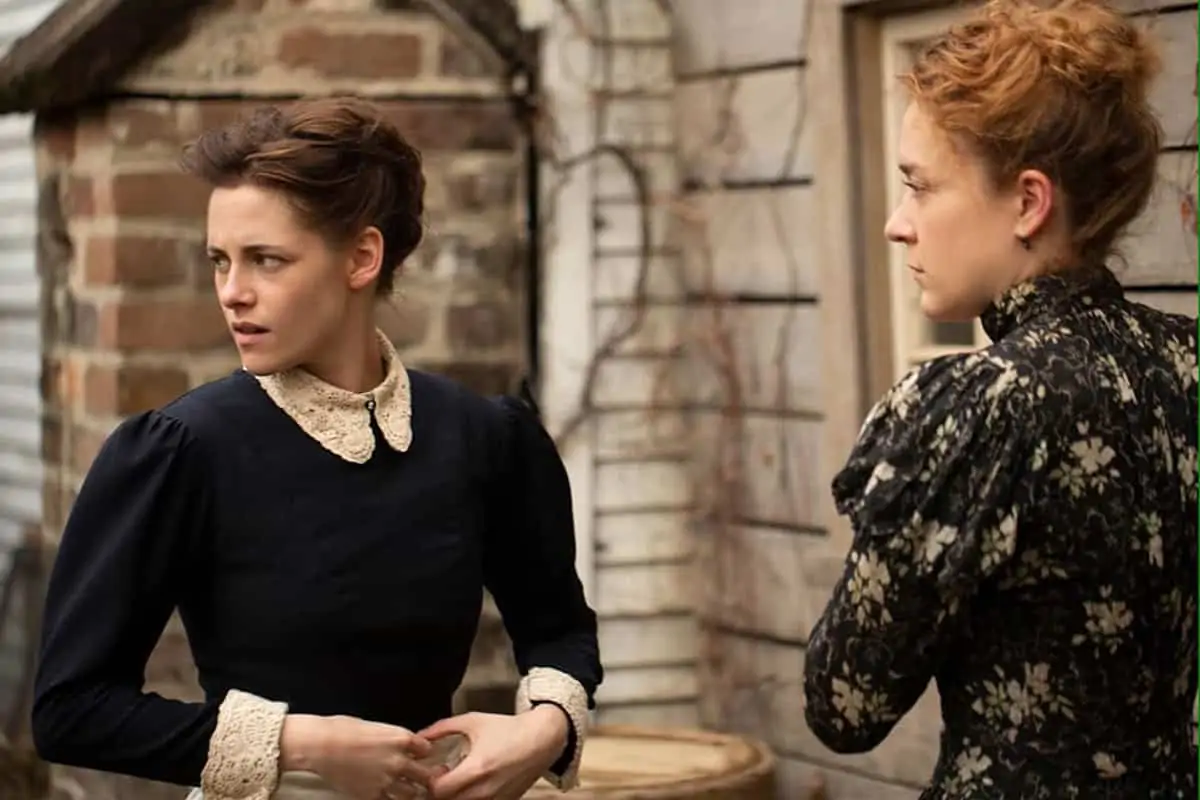
Roughly half of the film takes place in and around the Borden home. “Finding the right balance of scale, architectural accuracy, availability, and sightlines to and from the house that did not require massive visual effects fixes for the period was a difficult task,” reveals Greenberg. “About three weeks from principal photography we found a place we were all thrilled with but then lost it almost immediately. Ironically, the house we finally shot in was on the same block. It was a huge amount of work for Elizabeth Jones on an incredibly accelerated schedule: moving the owners out, removing electrical fixtures, repainting, wallpapering and re-dressing the house, building the barn, adding the famous pear tree, and turning a paved patio and access road into the backyard. All of the rooms were connected allowing us to stack the space playing with foreground obstructions and tracking characters room to room in uninterrupted moves. Since Savannah looks nothing like Fall River we were forced to mostly imply rather than show the outside world. Ultimately, this works for the story by reinforcing the claustrophobic aspects of the narrative.”
A preliminary shot list was made for the entire film by Macneill ahead of preproduction. “Since we did not have any actual locations at that point, it was a previsualization exercise for him about the type of coverage and general flow he hoped to achieve in the edit,” observes Greenberg. “Then during preproduction, as we began to lock locations, Craig and I spent many hours on location refining his preliminary shot list and discussing how to block the scenes and cover them most efficiently and elegantly. This is a collaborative and fluid process, and also a great time to explore crazy ideas before the pressure of set. Our 1st AD, Yann Sobezynski, was frequently with us during these sessions, taking notes and weighing in on the realities of our schedule; and, kindly, making adjustments to accommodate our priorities as well.”

ARRI Rental in Atlanta suppled an ARRI ALEXA SXT combined with vintage Cooke Speed Panchro, Cooke S4i Primes, and ARRI/Fujinon Alura Studio zooms. “Lizzie was one camera shoot, except for a one two-camera day in the courthouse,” remarks Greenberg. Everything was captured on the SXT except for a drone clip featured at the end. “We shot directly to 512GB CODEX XR SSD drives in camera, shooting Open Gate ProRes 4444, 4K Cine [4096 x 2636], with a 2:39:1 aspect ratio matte.” Muted colours, gentle contrast and a hint of warmth helped to convey an austere and elegant atmosphere. “That look was achieved onset, in-camera, and did not change in the DI. Although, we tweaked and refined during the grading. “We had the good fortune to work again with Jason Crump who is the colourist [and partner] at Metropolis Post in New York. The film was graded on a Resolve Studio 14 system.”
“Our lighting package was a mix of HMI, Tungsten, and LED provided by our Gaffer, Peter Walts, and Paskal Lighting in Atlanta,” states Greenberg whose lighting schemes were influenced by the desire to utilize practical and available sources seen within the frame such as wall sconces, desk lamps and candlesticks. “This project required an improvisational mindset. In order to adapt to changing available conditions we employed a mix of HMI and Tungsten sources, along with a variety of LED panels and ribbons. For the many flicker effects, we used stand-alone LiteGear dimmers and RC4 flicker engines paired with Luminair software to wirelessly ride levels and flicker intensities, often making adjustments mid-take.”
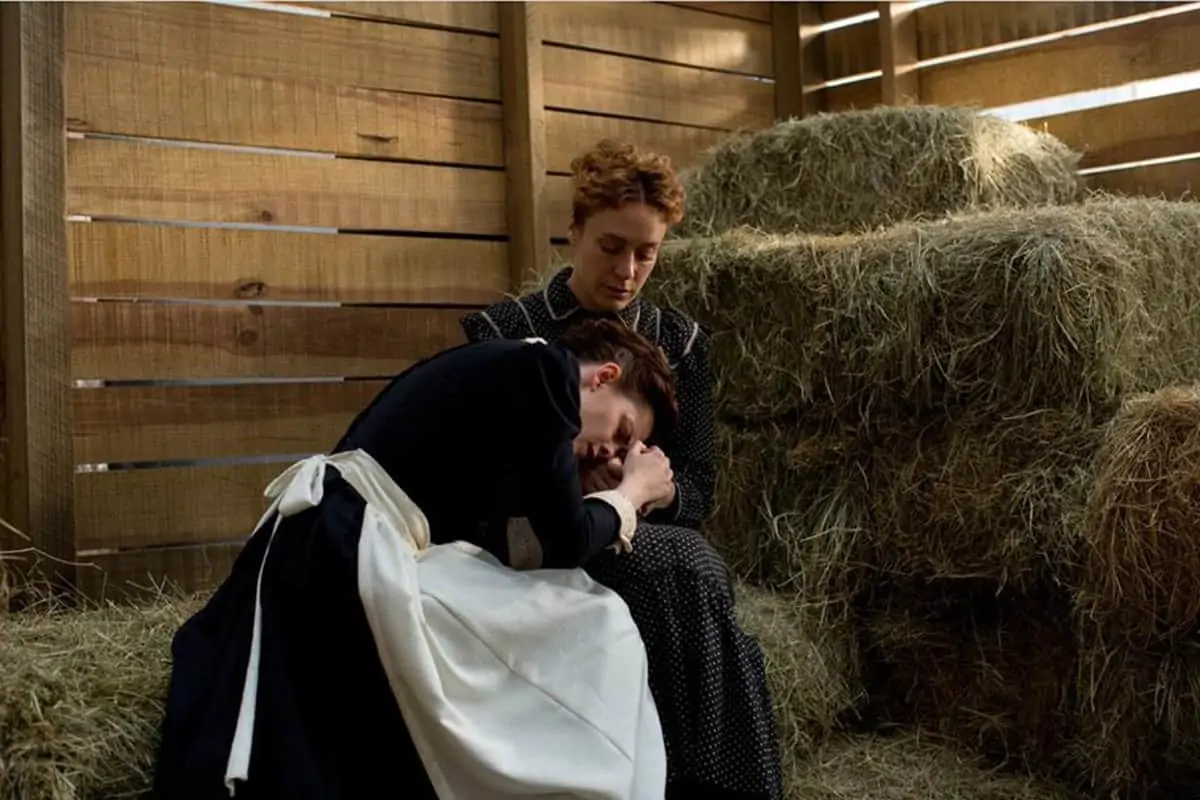
"The camera movement in Lizzie is mostly formal and restrained with a mix of slow, creeping zooms, inching dolly shots, and static compositions. But in moments of passion and anger, the camera shifts to intimate, wide angle, close-up handheld work."
- Noah Greenberg
The house maid Bridget Sullivan (Kristen Stewart) comes up the service stairs from the kitchen with a candle in her hand bringing towels for Lizzie Borden (Chloë Sevigny) following her spell at the opera. “The key light is all from practical sources: the double wick candle in Bridget’s hand, and two oil lamp wall sconces in the hallway [one mid-hall and one by Lizzie’s bedroom door],” explains Greenberg. “We added some subtle fill from the kitchen at the base of the service stairs with an LED bounce a couple stops below the candle, just enough to hold some texture in the service stairs where the candle fell off. At the other end of the hallway, we added a fill from the main stairs to reinforce the oil lamp by Lizzie’s room so that the end wall/door would be bright enough to create the silhouette of Bridget in the hallway. The light that spills from Lizzie’s room was from a China ball. This shot was difficult because the levels from the key motivating sources were so low and spread out in difficult places to add natural feeling reinforcement. It ends up being a haunting image though, nicely establishing Bridget’s isolation.”
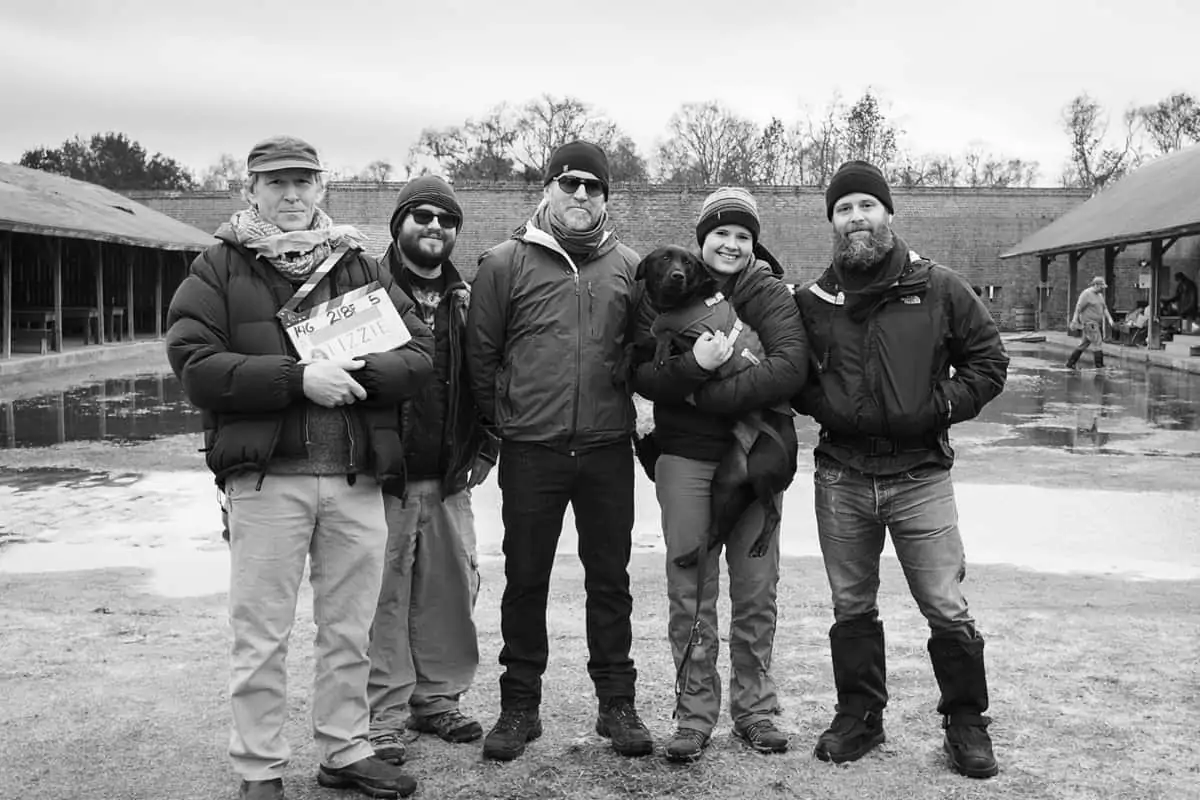
Left to right: Richard J. Lacy (First AC), Matt Dixon (Media Manager), Chris W. Johnson (Camera Operator), Wiley (Dog), Kane Pearson (Second AC), Noah Greenberg (DP)
Lizzie and Bridget finally kiss during a daylight scene in the barn. “The camera movement in Lizzie is mostly formal and restrained with a mix of slow, creeping zooms, inching dolly shots, and static compositions,” notes Greenberg. “But in moments of passion and anger, the camera shifts to intimate, wide angle, close-up handheld work. In this scene, the camera follows and reacts to Bridget and Lizzie. The camera is an active participant, exploring the scene. In fact, due to the wide focal length, the camera is frequently almost touching the actors. We lit the scene with an 18K HMI, high up and flooded out, to give us a ‘sunny’ base and added some haze to give the air a little texture. Craig was adamant about having flare in the shot which we could not achieve with the 18K where it needed to be. To resolve this, we tucked a 1.8K HMI into the background on the same axis as the 18K that I was able to get in frame and use to selectively flare the image giving it a more romantic, softer feel.”
A slider was taken apart and married to a rocker plate for a shot where Lizzie passes a note to Bridget on the stairs. “We needed the camera on the floor of the landing, and it had to slide, pan subtly, and tilt through the balustrades while tracking Lizzie descending the stairs,” states Greenberg. “For the most part we tried to eliminate or at least mitigate the need for visual effects work. In the house, we removed all of the electrical fixtures and did our best to frame out the elements of modernity, and Savannah’s infernal, ubiquitous Spanish Moss. The only shot that was conceived [of necessity] as a visual effects shot was Bridget on the train at the end. It was shot in a rail museum in Savannah with green screen. We had crew hanging off either end of the car rocking it and other crew standing on the green screen supports in what turned into a torrential rain storm. It was a simple thing that became rather miserable under the circumstances.”
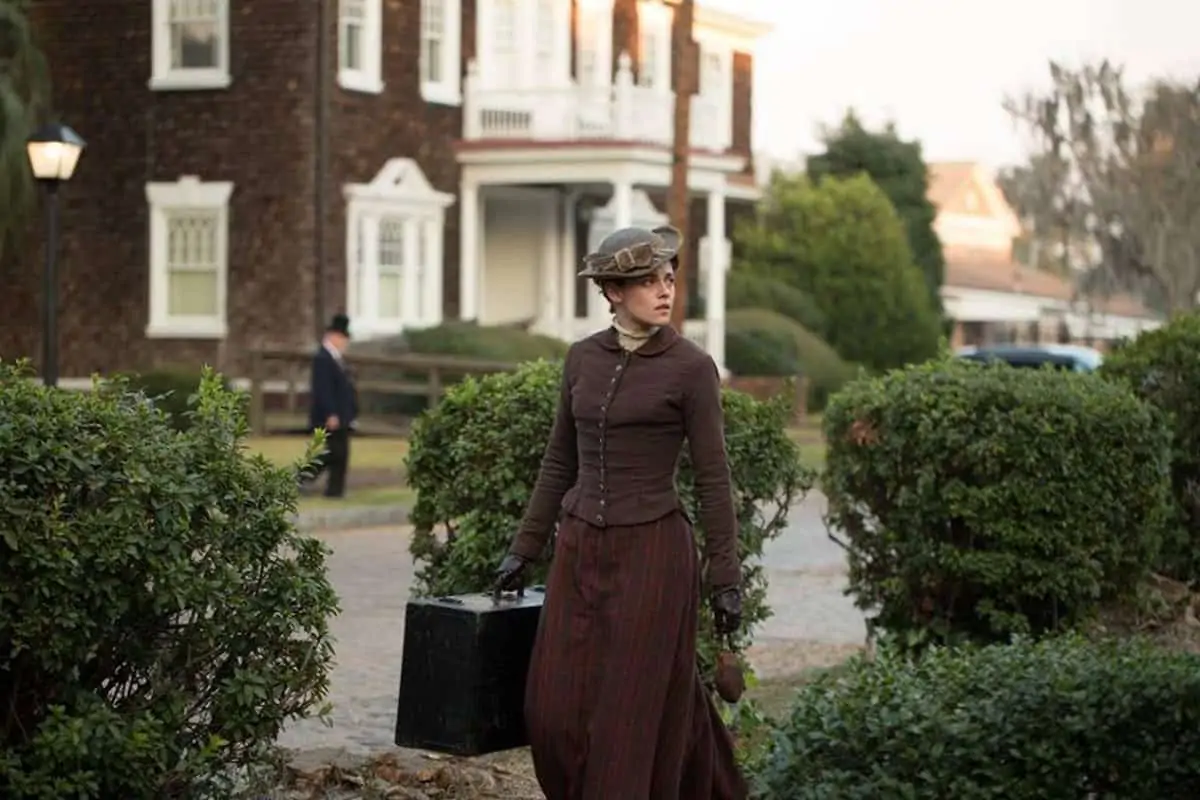
Key crew members were gaffer Peter Walts, key grip David Spencer, camera operator Chris W. Johnson, 1st AC Richard J Lacy, and 2nd AC Kane Pierson. “The whole cast was amazing; they were thoughtful, collaborative and deeply invested,” remarks Greenberg.
“My favourite sequence starts with Bridget discovering a note from Lizzie in Lizzie’s room. It is a simple, static wide shot where we see her in the foreground and also in a reflection in a dressing mirror in the background; it is a carefully balanced, and dynamic composition that I love, and the light is quite elegant. It then cuts to a medium of Bridget stowing the note in her waistband then back to the wide. Then, to a shot of Lizzie descending the stairs, filmed through the balustrades, where she hands a note to Bridget. Finally, to an intimate scene in Lizzie's room where she and Bridget nearly kiss. It is a close-up, wide angle, handheld setup in front of the dressing mirror, wrapped in window light. On the final beat, they are interrupted by Emma who enters the room seen in the reflection in the dressing mirror. It is a beautiful sequence that for me in many ways encapsulates the tone of the film.”





